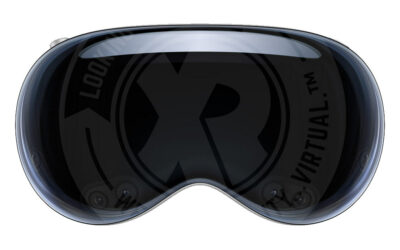**** UPDATED 9/17/2015 ****
What is a Virtual Reality Headset?
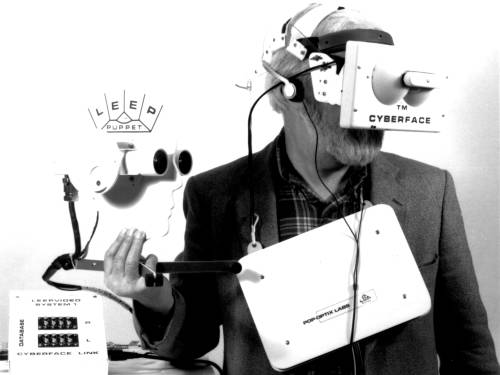 A Virtual Reality Headset is a device that allows a user to view 3D or virtual content. This can vary from simple 360 panoramas to fully immersive virtual landscapes that are able to be traversed by the viewer. The concept of a headset taking someone into a virtual world and allowing them to escape reality is nothing new. the idea and beginnings of the technology have been in existence since the late 1950’s. The most widely popularized “grandfather” of virtual reality is Ivan Sutherland, whom created The Sword of Damocles in 1968.
A Virtual Reality Headset is a device that allows a user to view 3D or virtual content. This can vary from simple 360 panoramas to fully immersive virtual landscapes that are able to be traversed by the viewer. The concept of a headset taking someone into a virtual world and allowing them to escape reality is nothing new. the idea and beginnings of the technology have been in existence since the late 1950’s. The most widely popularized “grandfather” of virtual reality is Ivan Sutherland, whom created The Sword of Damocles in 1968.
For more on the history of Virtual Reality read more here
Top Virtual Reality Headsets
An HMD is a Helmet Mounted Device, or Head Mounted Device with either one or two optic displays mounted inside the virtual reality headset. There are many variations in how the headset functions internally, however all HMDs have one thing in common. At their core they are nothing more than small high resolution screens connected to a powerful computer. The high resolution screen keeps the integrity of the image and the experience by minimizing the “seen” pixels and keeping the image smooth, meanwhile the computer constantly buffers and loads the next images in the background to reduce on visual latency.
Oculus Rift
 Lets get this one out of the way first. It is probably the most recognized HMD out there right now and rightfully so. Oculus Rift founder Palmer Luckey may be responsible for single handily recharging the entire VR industry with his first hacked together low latency solution.
Lets get this one out of the way first. It is probably the most recognized HMD out there right now and rightfully so. Oculus Rift founder Palmer Luckey may be responsible for single handily recharging the entire VR industry with his first hacked together low latency solution.
The Oculus Rift began development in Palmer Luckey’s parents garage in 2011 and has come a long way since. The project originally surfaced on MeantToBeSeen forums, an online resource forum for virtual reality headset enthusiasts, as a small project by Luckey. Within the course of a year, he would nail over $2.4 million USD in Kickstarter funding. Not to mention the heavy weights he has on the team including legendary game engine developer and founder of Id software: John Carmack.
In 2012 Mark Zuckerburg, the brain behind Facebook announced that he had partnered up with Oculus to provide the extra funding they needed to make Luckey’s virtual dream a virtual reality. This headset boasts being the first Virtual Reality Headset that does not trigger virtual nausea. Where all other virtual reality headset options leading up to the Oculus Rift had issues rendering images and created lag when the user turned their head, the team at Oculus VR worked extensively to address that issue.
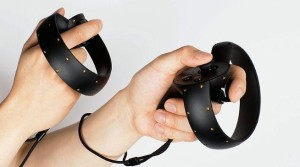 The headset has an external camera that allows the Rift to track the users current head motions along with a gyroscope, accelerometer, and magnetometer. When all of these pieces of the puzzle come together they are able to easily keep up with the user. The Oculus Rift is integrated into your computer via the DVI and USB ports. The finalized version for consumer sale is currently forecast to release in early 2016. The Oculus Rift virtual reality headset will support Xbox One control pads, along with the Oculus Touch wireless controllers that allow hand tracking.
The headset has an external camera that allows the Rift to track the users current head motions along with a gyroscope, accelerometer, and magnetometer. When all of these pieces of the puzzle come together they are able to easily keep up with the user. The Oculus Rift is integrated into your computer via the DVI and USB ports. The finalized version for consumer sale is currently forecast to release in early 2016. The Oculus Rift virtual reality headset will support Xbox One control pads, along with the Oculus Touch wireless controllers that allow hand tracking.
More Info
Click here to for more information on The Oculus Rift Virtual Reality Headset
Click here to stay up to date on Oculus developments straight from the source: The Oculus Rift Blog
HTC Vive
 Valve, a software and video gaming company, and HTC, a Taiwanese based smartphone and tablet manufacturer teamed up to create the HTC Vive. The Vive is integrated with Valve’s existing massive gaming structure providing one of the most extensive listings of accessible and compatible games to date. The 360 head tracking, 70 sensors and a 90Hz refresh rate just adds to the HTC Vive’s list of things to brag about. While some VR headsets are more focused on a widespread target audience, the HTC Vive is more geared towards the growing market in virtual reality gaming.
Valve, a software and video gaming company, and HTC, a Taiwanese based smartphone and tablet manufacturer teamed up to create the HTC Vive. The Vive is integrated with Valve’s existing massive gaming structure providing one of the most extensive listings of accessible and compatible games to date. The 360 head tracking, 70 sensors and a 90Hz refresh rate just adds to the HTC Vive’s list of things to brag about. While some VR headsets are more focused on a widespread target audience, the HTC Vive is more geared towards the growing market in virtual reality gaming.
One thing that is completely different about the HTC Vive is its use of “Lighthouses”, 4 small devices that look like pylons, that when placed into a room will virtually map its contents. This allows the user to not have to be “tethered” to one spot.
The controllers that are being launched with the HTC Vive have feedback sensors, letting the user virtually see where they are in the real world. No more blind fumbling to find your controller, and once you are using the Vive you can look down at any point in time and virtually view your controller. Please note however that this virtual reality headset, and most of the other VR headsets we have and will discuss that are PC compatible may require some serious hardware updates on older desktops, and may not function properly on some non-gaming dedicated laptops.
The release date is set for a holiday 2015 launch. With high anticipation of being one of the cornerstone devices to bring us into the future of virtual reality and video gaming.
More Info
Click for More Information on The HTC Vive Virtual Reality Headset
Click to subscribe For Updates about The HTC Vive
Sony Project Morpheus
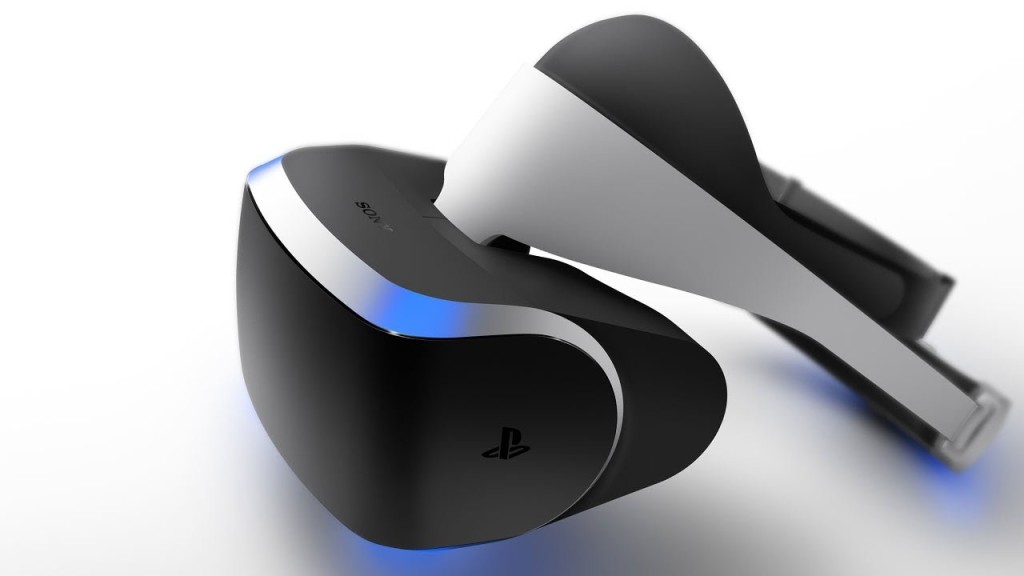 While the HTC Vive is targeted at PC gamers, and the Oculus Rift is setting its sights on Xbox One users, Sony has created their answer to the Virtual Reality Headset console war; Project Morpheus. Although it does not have a definitive release date, it is expected to arrive on shelves during the first half of 2016.
While the HTC Vive is targeted at PC gamers, and the Oculus Rift is setting its sights on Xbox One users, Sony has created their answer to the Virtual Reality Headset console war; Project Morpheus. Although it does not have a definitive release date, it is expected to arrive on shelves during the first half of 2016.
The original Morpheus prototype that was unveiled at Game Developers Conference in 2015 has since been revamped. The original 5 inch LCD display has been booted and replaced with a sleek 5.7 inch OLED display. The OLED (organic light-emitting diode) display will allow for refresh rates at 120 frames per second, will remove any motion blur, lag latency, and is running at a smooth 120hz. The console will be integrated for use with Sony’s Playstation 4 console, but rumor has it that Sony will also make the Morpheus compatible with PCs.
More Info
Subscribe To Sony’s Project Morpheus email updates.
FOVE Virtual Reality Headset
While most headsets are targeted at keeping up with where your looking by tracking your head movements, the FOVE VR is upping the stakes by tracking your eye movements. That’s right. It will know where you are looking.
Why is this a benefit that might give the FOVE the upper hand? By tracking your retinal movements via an infrared sensor, the Virtual Reality headset will be able to give you a full depth-of-field. If you’re looking for the most realistic experience coming to the market, search no further.
There is a 100 degree field of vision, a 5.7 inch high resolution display, and the eye tracking sensors pick up and move at a rate of 120FPS. When playing a game with the FOVE, looking at the characters will trigger them to interact with you. No longer will you need to chase down an NPC (non playable character) tapping buttons rapidly, hoping to set off their dialogue programming.
The biggest highlight of the FOVE VR is its accessibility for anyone. FOVE VR released a video of a child with crippling muscular dystrophy, unable to fully use his hands, “playing” the piano for his class using nothing more than the FOVE VR, a modified piano, and his eyes. Quadriplegics can manipulate robots with only their eyes to do small tasks, and even virtually walk around their house, or anywhere they wish to virtually go. No controllers or add-ons will be required for this device, and the FOVE VR will even allow you to play PC games without having to upgrade your current gaming rig.
More Info
For More Information About FOVE Virtual Reality Headset
Join The FOVE VR Mailing List
Avegant Glyph – the Virtual Reality Headset that Beams Images Directly into your Eyes!
Science Fiction fans can now rejoice. The future is here. The Avegant Glyph is completely different than any other virtual reality headset coming into the market.
The Avegant Glyph uses LEDs and Mirrors to directly beam visuals into the back of your retina!
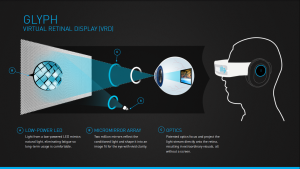 The images that are sent into your optical receptors are fluid, sharp, and don’t lag. Your brain is the processor and your eyes are the screens. This is the closest thing we as human beings have come to being able to input information directly into your optic nerve. What does this mean? No nausea, no lag, no latency, and a fuller field of view. The technology is only currently limited by the industry standards for HDMI, which currently clocks at 60 fps.
The images that are sent into your optical receptors are fluid, sharp, and don’t lag. Your brain is the processor and your eyes are the screens. This is the closest thing we as human beings have come to being able to input information directly into your optic nerve. What does this mean? No nausea, no lag, no latency, and a fuller field of view. The technology is only currently limited by the industry standards for HDMI, which currently clocks at 60 fps.
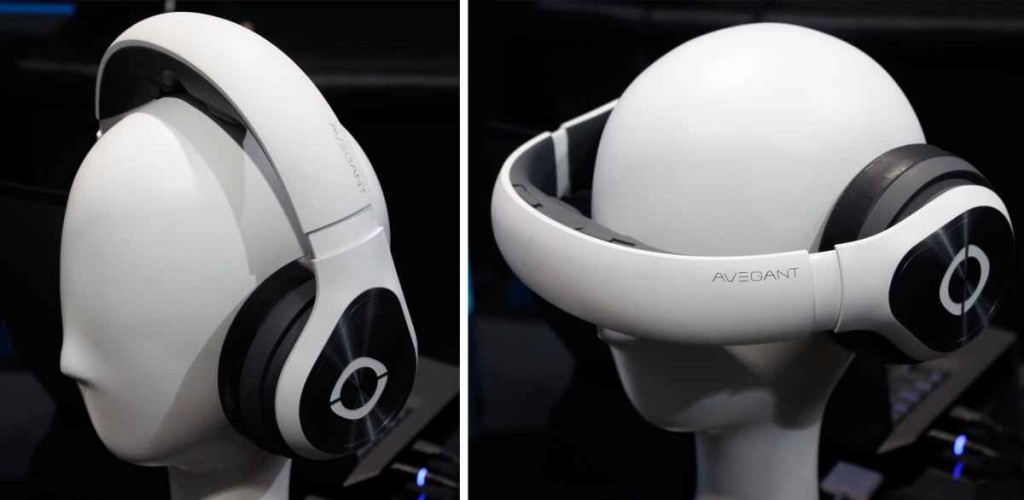 The headset itself uses a clamping method and looks reminiscent of large “old school” headphones.. Avegant has done their homework though, and is positive that the HMD will fit any head shape with correct pressure balance. The optics are adjustable based off of your individual eye spacing, and your current vision. Even the hardest of sight users can adjust the device to be compatible. They are currently working to add small clips onto the side of the headset to incorporate an optional head strap, targeting longevity users and gamers. While the virtual reality headset may look large and heavy, don’t let looks fool you though, the headset weighs just 16 oz
The headset itself uses a clamping method and looks reminiscent of large “old school” headphones.. Avegant has done their homework though, and is positive that the HMD will fit any head shape with correct pressure balance. The optics are adjustable based off of your individual eye spacing, and your current vision. Even the hardest of sight users can adjust the device to be compatible. They are currently working to add small clips onto the side of the headset to incorporate an optional head strap, targeting longevity users and gamers. While the virtual reality headset may look large and heavy, don’t let looks fool you though, the headset weighs just 16 oz
The headset currently has a 3 hour battery life for a full visual experience, and a 48 hour life for audio, but charges with a simple micro usb and has a built in microphone. The Avegant Glyph is slated for release this year, but no word yet on a definitive release date.
More Info
For More Information About The Avegant Glyph Virtual Reality Headset
Join the Avegant Glyph Newsletter For Updates on Release
Razer OSVR
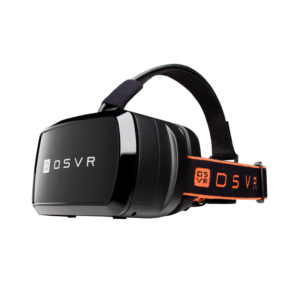 Razer is one of the leading names with computer based accessories. They are renowned for their development of top of the line mice, keyboards, and gaming headsets.
Razer is one of the leading names with computer based accessories. They are renowned for their development of top of the line mice, keyboards, and gaming headsets.
Razer has decided to create an open source virtual reality movement. It’s kind of like HTML for VR. If you want to currently create VR Content you have to pay either Samsung Gear or Google to create content. Currently you can only do low res 360 videos, but the open source VR initiative is allowing any users to create their own games, videos, and programs. Now all developers can create content without having to pay for additional licensing and within a smaller set of guidelines, essentially giving developers free reign to create as they please, without having to pay to use the software.
This isn’t so much of a virtual reality headset, as it is a movement, yes Razer is creating the hardware, but the larger piece of the puzzle is the software development. This will be one to watch to see how opensource VR from Razer is adopted.
More Info
For More Information on The Razer OSVR Virtual Reality Headst
Link to the OSVR Movement’s Website
Sulon Cortex Virtual Reality Headset
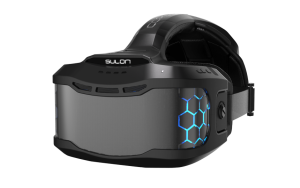 The Sulon Cortex is currently more of a dream and a prototype than it is a complete virtual reality headset. While early prototypes have been unveiled, the finalized product is far from complete. This headset may be the most ridiculous looking one, recognized by its distinctive “honeycomb” graphics on the sides of the visor. It has high hopes and the potential to be a top contender technology wise.
The Sulon Cortex is currently more of a dream and a prototype than it is a complete virtual reality headset. While early prototypes have been unveiled, the finalized product is far from complete. This headset may be the most ridiculous looking one, recognized by its distinctive “honeycomb” graphics on the sides of the visor. It has high hopes and the potential to be a top contender technology wise.
There are no specs currently available or a final release date, but the Sulon Cortex promises big things. The headset will be able to present both virtual and augmented reality. Unlike any of its potential competitors that requires a separate device to project or create the images, the Sulon Cortex will be a standalone device.
The Oculus Rift, Project Morpheus and the HTC Vive all are currently able to brag about being “on top” of the game. The Sulon uses no wires and tracks the user via the headset and creates both full VR and AR experiences.
The device is untethered so the user can walk around inside the house, go outside, and come back in without re-calibrating any settings or running extension cords everywhere. The developer kit started taking pre-orders in early 2014, and is finally shipping out developer prototypes for the small price of $499 USD.
VRVana Totem
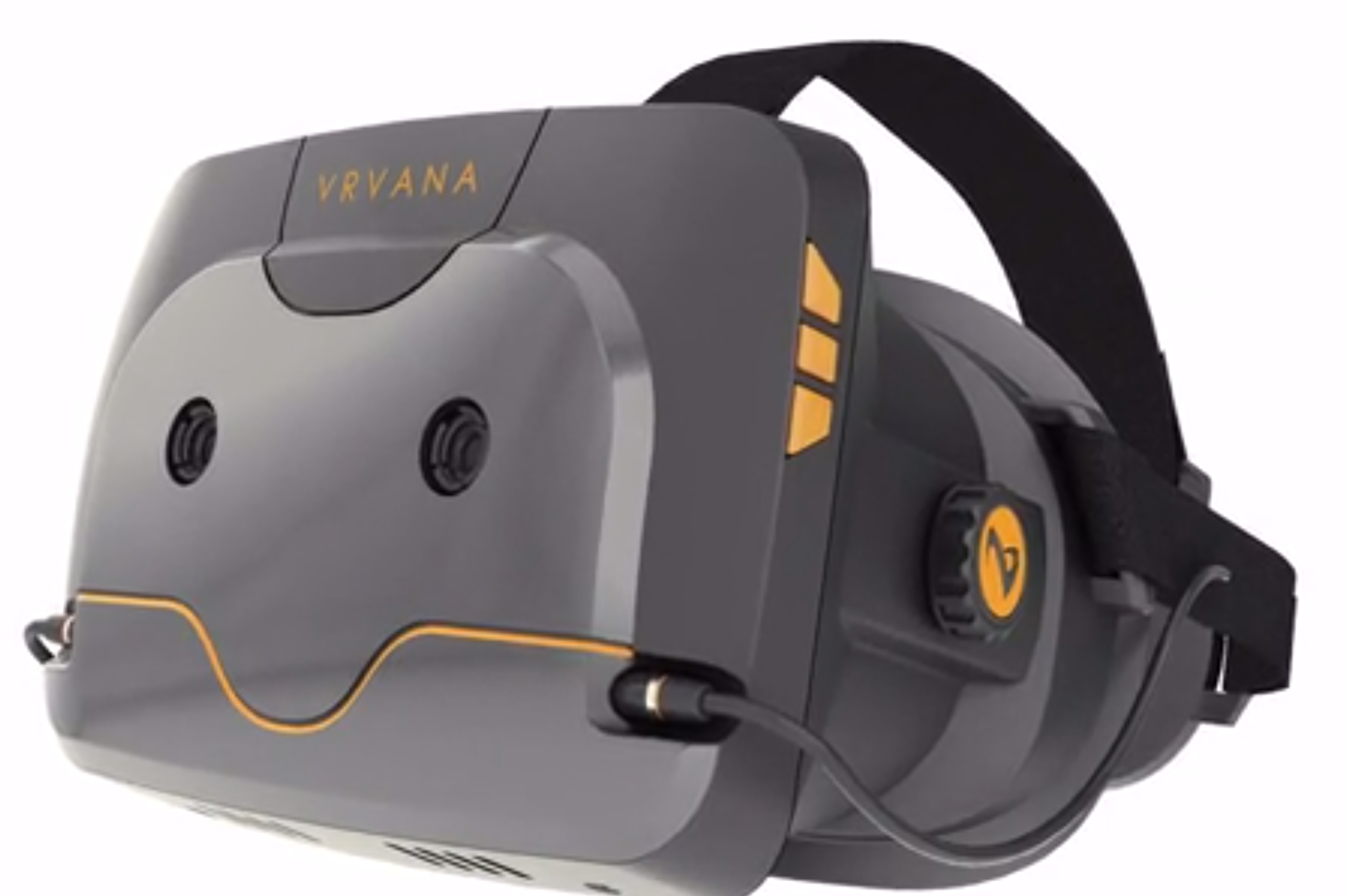 While most headsets coming out are only focused on providing support for top of the line consoles and devices, the VRVana Totem is taking things back to the basics. The VRVana Totem is one of the only upcoming virtual reality headsets that is working on being compatible with older consoles such as Sony’s Playstation 3, and Microsoft’s Xbox 360.
While most headsets coming out are only focused on providing support for top of the line consoles and devices, the VRVana Totem is taking things back to the basics. The VRVana Totem is one of the only upcoming virtual reality headsets that is working on being compatible with older consoles such as Sony’s Playstation 3, and Microsoft’s Xbox 360.
The developers understand that not everyone can afford the top in technology, so the headset itself takes most of the workload on and allows your older PC to still work with it. Boasting a 120 degree field of vision and the ability to support ALL 3D media, the VRV Totem is the obvious choice for the gamer on a budget, or someone that does not wish to spend hundreds of dollars in upgrades, on top of an expensive virtual reality headset.
With just a push of one of the three buttons built into the headset the user can switch quickly between their virtual view, and a view of reality. Lastly, the VRVana Totem has taken our ocular concerns seriously, while with most headsets users that wear glasses have to deal with them uncomfortably smushed into their face, the Totem allows you to adjust for all visions or lack there of.
More Info
For Updates on VRVana Virtual Reality Headset
For More Information on VRVana Totem
StarVR Virtual Reality Headset
 Star VR has made your field of vision their priority. They have developed the first panoramic virtual reality headset that allows its users to see a 210 degree field of vision!! Compared to the typical 110 degrees and less that we have come to expect.
Star VR has made your field of vision their priority. They have developed the first panoramic virtual reality headset that allows its users to see a 210 degree field of vision!! Compared to the typical 110 degrees and less that we have come to expect.
The main difference in their design is having two dedicated screens for the headset instead of one screen split into two. While the headset looks a lot bulkier than most of its competitors, the increased field of vision and true immersion may give it the upper hand. Full 2560 x 1440 pixels per eye is their unique selling point, providing each eye with the largest field of view humanly and virtually possible. Little else is known as far as in-depth tech specs and a release date are concerned. However, I would definitely keep up with Star VR to see what they do next to their upcoming virtual reality headset.
More Info
For Updates on StarVR Virtual Reality Headset
For More Information on StarVR
Visus VR
 “Visus is the world’s first PC-Driven Virtual Reality headset for PC Gamers, ”
“Visus is the world’s first PC-Driven Virtual Reality headset for PC Gamers, ”
If you already have a fully updated and upgraded home PC and don’t want to break the bank getting into virtual reality gaming, here you go. The Visus VR is the first fully computer rendered virtual reality headset that lets you use your phone as the visual screen. While this may be bad news for those of you with cracked smartphone screens, this may also be the motivation to go get them fixed.
How does it work? Instead of focusing on the developer aspect of releasing a virtual reality headset, Visus VR focuses on what already exists. By using their software, TriDef 3D, you can convert nearly ANY existing PC game into a virtual experience, and have that experience sent to your phone to be viewed through their display. Please take note that you do have to have a Nvidia GTX or GTX-m 600+ graphics card for your computer to process and handle this technology.
As far as how it gets from your computer to your phone, there’s an app for that, and its even free! Their website recommends using newer cellphones such as the iPhone 6 and upwards along with the Samsung Galaxy S5 and newer. The other feature the Visus VR uniquely tackles is face heat and the “fog” that is created on lenses from extended use and has put a small fan onto the top of the display to counteract that annoyance.
Mobile Virtual Reality Headsets
Mobile Virtual Reality Headsets are devices that do not require a computer, or gaming console to perform their duties. They only require a compatible mobile device. While this approach is limited by the technology already embedded into our smartphones, it does open up the possibilities of a virtual world to those on a tighter budget or someone who is still uncertain about virtual reality. The two main contenders that we will discuss are the Samsung Mobile VR and Google Cardboard. The Samsung Mobile requires dedicated hardware made by Samsung, for Samsung; where as Google Cardboard will accept any mobile device. From iPhone 4’s to Androids, to even Windows phones. This next listing will provide a comprehensive guide for what each unique Mobile Virtual Reality Headset is able to offer.
Samsung Gear Virtual Reality Headset
 If you own a Samsung Galaxy S6 or a Note 4 and want to mess around with virtual reality, look no further. The Samsung Gear VR allows you to put your phone into the face of their virtual reality headset and use your phone as a display. The micro USB port on the inside of the headset allows your phone to snap in and stay put while powering the headsets additional features such as the side touch panel. There is already an entire database of content awaiting your viewing via their Milk VR program that is available to download via the Android market on compatible devices. While the headset is lower on the price scale, at a slim $199 USD, the limitations may be a deal breaker. With how quickly mobile devices are rendered obsolete and outdated, I plan on keeping an eye on the Samsung Gear VR to see if this virtual reality headset will be compatible with all phones following the Galaxy S6. If nothing else, the Samsung Gear VR will at least give you a good taste of the potential technology upcoming for virtual reality.
If you own a Samsung Galaxy S6 or a Note 4 and want to mess around with virtual reality, look no further. The Samsung Gear VR allows you to put your phone into the face of their virtual reality headset and use your phone as a display. The micro USB port on the inside of the headset allows your phone to snap in and stay put while powering the headsets additional features such as the side touch panel. There is already an entire database of content awaiting your viewing via their Milk VR program that is available to download via the Android market on compatible devices. While the headset is lower on the price scale, at a slim $199 USD, the limitations may be a deal breaker. With how quickly mobile devices are rendered obsolete and outdated, I plan on keeping an eye on the Samsung Gear VR to see if this virtual reality headset will be compatible with all phones following the Galaxy S6. If nothing else, the Samsung Gear VR will at least give you a good taste of the potential technology upcoming for virtual reality.
More Info
For More Information on the Samsung Gear Virtual Reality Headset
Zeiss VR One Virtual Reality Headset
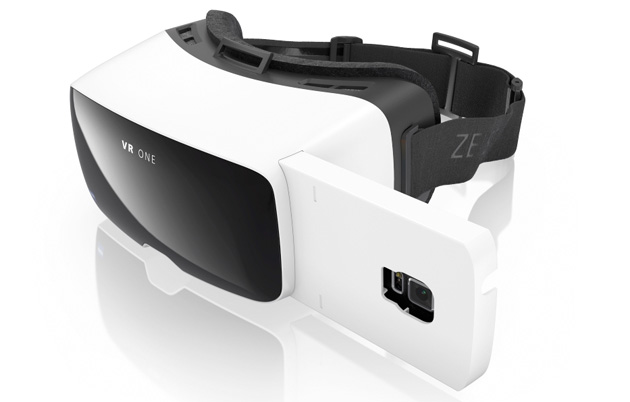 The Zeiss VR One is compatible with any mobile device between 4.7 inches to 5.2 inches. This virtual reality headset is specifically targeting users with older Samsung phones and iPhone 4 – 5s users.
The Zeiss VR One is compatible with any mobile device between 4.7 inches to 5.2 inches. This virtual reality headset is specifically targeting users with older Samsung phones and iPhone 4 – 5s users.
Unfortunately the iPhone 6 and the Galaxy s4 are too large for this device as is, but it is one of the few headsets that is specifically targeted at mobile users that aren’t fully upgraded. What makes Zeiss VR unique from any other virtual reality initiative is that they are actively soliciting opinions from the public regarding their support. They allow users to vote for their next supported phones and are offering additional “trays” that slide into the headset to accommodate larger devices.
So essentially if you do have a newer phone, for an extra price you can pay to have the virtual reality headset slightly modified for you. The lenses act similarly to the Samsung Gear, and the headset features an audio input for taking audio from your mobile phone. Shipping is currently available in US, China, Asia, Europe, and Australia no news on when Africa and South America will be able to purchase the Zeiss VR One.
More Info
For More Information on the Zeiss VR One Virtual Reality Headset
Homido Virtual Reality Headset
 Homido is taking a slightly different approach on their marketing strategy. While the headset itself is very similar to literally every other mobile device virtual reality headset, they have a stiff upperhand when it comes to their support and development. By downloading the Homido app on any mobile device, you will have access to over 300 tours, videos, and games. The list is constantly growing because of their strong developers support.
Homido is taking a slightly different approach on their marketing strategy. While the headset itself is very similar to literally every other mobile device virtual reality headset, they have a stiff upperhand when it comes to their support and development. By downloading the Homido app on any mobile device, you will have access to over 300 tours, videos, and games. The list is constantly growing because of their strong developers support.
They are currently using Google and Durovis Dive SDK to develop any and all add-ons to their device. Because this headset is literally a plug and play, the only limitations are your own personal smartphone. The Homido is available online for a small fee of just under $100 USD including shipping. There is also an optional bluetooth controller that can be purchased with the Homido for gaming on Android devices.
More Info
For More Information on Homido
Archos Virtual Reality Headset
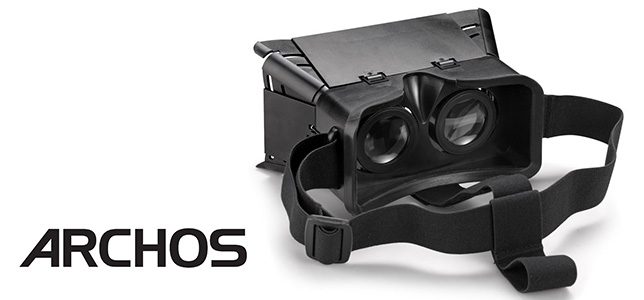 Another Google Cardboard compatible device. The Archos VR Headset is very similar to the Homido, with the only real differences being that the Archos VR has you slide your phone into a small niche instead of a magnetic locking panel on the front face of the device. The niche has an opening and closing mechanic similar to how an alligator opens their mouth. However, there are currently no additional upgrade options to incorporate larger or smaller phones than the sizing they are currently catering to; as the sliding hinge has a maximum and minimum opening level. The virtual reality headset does feature inlaid gyroscopes and accelerometers to help with head tracking. There is no online purchasing option currently available, instead Archos is only being distributed to select retailers.
Another Google Cardboard compatible device. The Archos VR Headset is very similar to the Homido, with the only real differences being that the Archos VR has you slide your phone into a small niche instead of a magnetic locking panel on the front face of the device. The niche has an opening and closing mechanic similar to how an alligator opens their mouth. However, there are currently no additional upgrade options to incorporate larger or smaller phones than the sizing they are currently catering to; as the sliding hinge has a maximum and minimum opening level. The virtual reality headset does feature inlaid gyroscopes and accelerometers to help with head tracking. There is no online purchasing option currently available, instead Archos is only being distributed to select retailers.
More Info
For More Information on Archos Virtual Reality Headset
PINCH for iPhone/Android
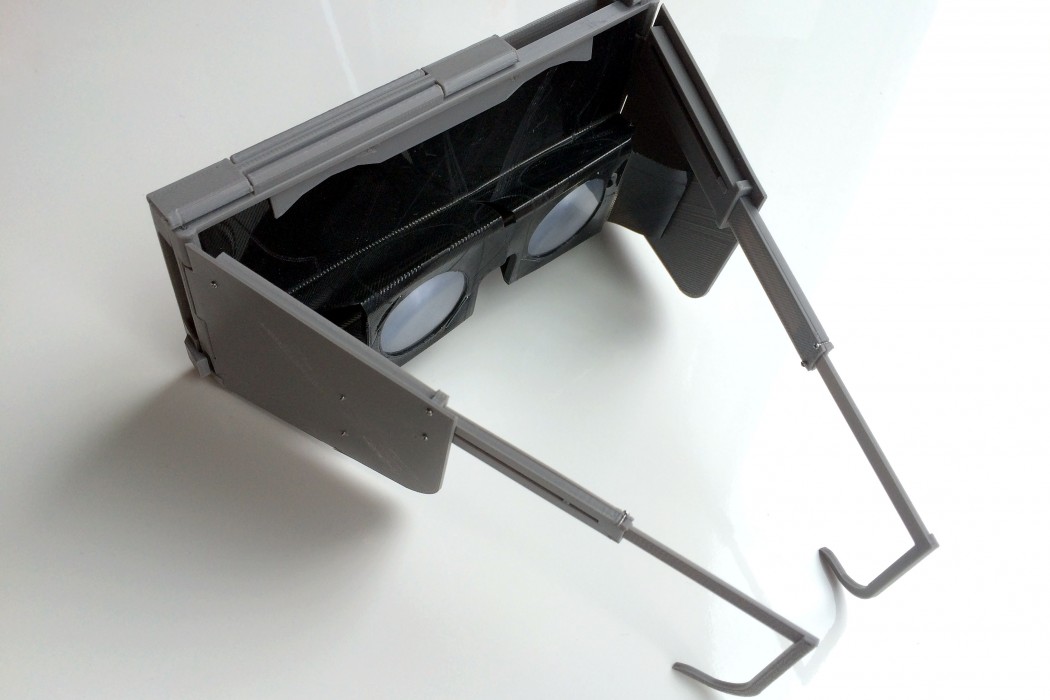 Pinc VR [pronounced pinch] isn’t worried about creating a product built for gaming, instead they are targeting the masses. Mobile users. More specifically iPhone and Android users. Their HMD provides a virtual desktop complete with a keyboard, allowing the users to perform any work they would do on their phone virtually. The Pinc VR is essentially a very fancy iPhone or Android case that folds out into a virtual reality headset and comes with two small finger clips that are motion tracked. The finger slips allow the user to manipulate the central hub, type on the keyboard, virtually shop at your favorite store’s virtual storefronts, and scroll through youtube videos just to name a few possibilities.The entire product is 3D printed and is a little rough, but for only $99 you can pre-order their Discovery Edition, that has been smoothed by hand, and is almost ready for consumer purchase.
Pinc VR [pronounced pinch] isn’t worried about creating a product built for gaming, instead they are targeting the masses. Mobile users. More specifically iPhone and Android users. Their HMD provides a virtual desktop complete with a keyboard, allowing the users to perform any work they would do on their phone virtually. The Pinc VR is essentially a very fancy iPhone or Android case that folds out into a virtual reality headset and comes with two small finger clips that are motion tracked. The finger slips allow the user to manipulate the central hub, type on the keyboard, virtually shop at your favorite store’s virtual storefronts, and scroll through youtube videos just to name a few possibilities.The entire product is 3D printed and is a little rough, but for only $99 you can pre-order their Discovery Edition, that has been smoothed by hand, and is almost ready for consumer purchase.
More Info
To Pre-Order or Crowdfund
For More Information on Pinc VR
Google Cardboard Goggles
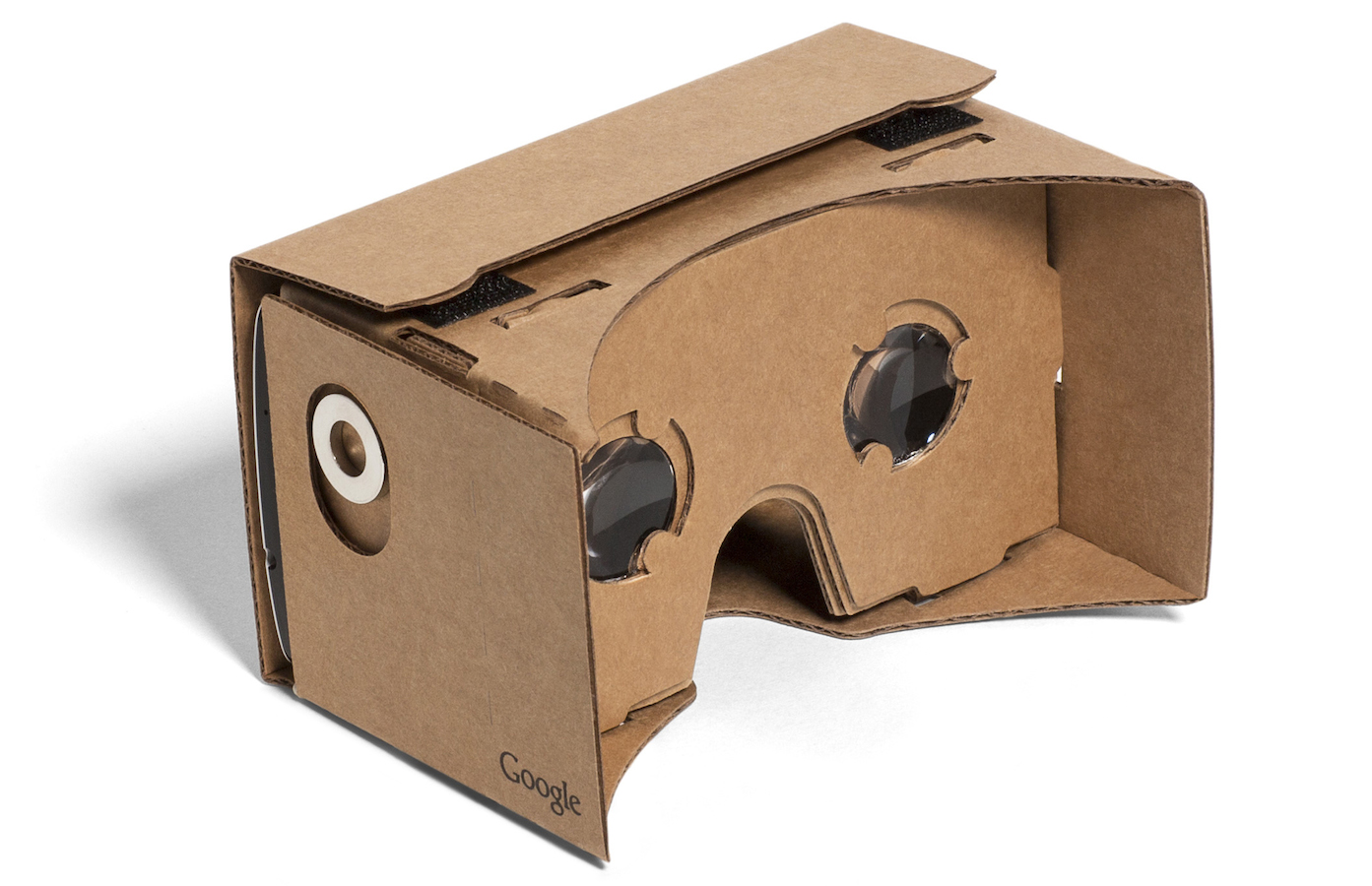 If slightly curious about virtual reality and don’t want to spend more than $5 then Google Cardboard may be for you. The concept is simple, fold the pre-marked cardboard, tuck in the flaps, put in your phone, see what virtual reality mobile headsets are all about. For $5 you certainly won’t get the top of the line experience, but it is a great first step.
If slightly curious about virtual reality and don’t want to spend more than $5 then Google Cardboard may be for you. The concept is simple, fold the pre-marked cardboard, tuck in the flaps, put in your phone, see what virtual reality mobile headsets are all about. For $5 you certainly won’t get the top of the line experience, but it is a great first step.
More Info
For More Information on Google Cardboard
Cmoar
Cmoar is another mobile virtual reality headset that is currently being KickStart-ed. When the Pinc VR is focused on providing you with a more in depth experience doing your daily tasks on your phone, the Cmoar is taking a canvas approach. The Cmoar is another 3D printed headset, but this one offers a lot more features for the user than most other headsets. There is a touch button for navigation on the side of the virtual reality headset, along with 4 smaller buttons that can be programmed for a wide array of tasks.
Out of all the mobile virtual reality headsets the Cmoar is the only one that features not just a headphone jack, but a USB and HDMI input, allowing you to use their headset for more than just mobile devices. The Cmoar comes with a motion based controller that looks like a modernized version of Nintendo’s Wii controller, and also features an external camera allowing users to experience augmented reality, and virtual reality with one device. The headset supports phones from 4 inches to 5.7 inches and features full optic adjustments along with 2D, 3D, and virtual reality modules that are interchangeable to provide a full scale of experiences. The Cmoar is expected to ship latest this year with their base product starting at just $99 USD ranging up to their iPhone 6 Plus Exclusive package containing every add-on humanly possible is just $250.
Altergaze Virtual Reality Headset
So you want to get into virtual reality, but don’t like the price tag of the Oculus Rift? Don’t worry! Altergaze is a 3D printed initiative that is focused on serving the masses by allowing them to open a world of possibilities, only using what is essentially a pair of goggles with a slot for your smartphone. The Altergaze is a fully customizable virtual reality headset, and when I say fully I mean FULLY. If you want a rainbow headset with skulls and unicorns, you can create it and have it printed.
Altergaze has two options for purchasing their headset. If you own a 3D printer or have access to one, they provide the blueprints, the customizing software, and the screws to assemble the product. If you don’t own a 3D printer, simply use their design program to make the virtual reality headset of your dreams, then send the print job off to one of the 3D printers local to you. All manufacturing and designing is done via open source and crowd sourcing, allowing literally anyone to start creating their own custom spin on the Altergaze and market it freely. All modern smartphones have their own accelerometer, gyroscope, and compass built into them, and Altergaze believes there is no reason to not use our existing technology. While this product is not targeted or designed for heavy users or gamers, the Altergaze provides a baby step in the direction of virtual reality for those who are curious or only interested in casual virtual reality.
GameFace Virtual Reality Headset
GameFace describes their product as, “a wireless, ultra-low latency head-mounted device for the next generation of VR Android gaming.” All of this is made possible by a 75Hz OLED display giving the users a 140 degree field of view. The power punch behind this virtual reality headset is its internal nVidia graphics driver, dedicated media server, and SSD flash storage. While we haven’t seen any high content videos or demonstrations since their prototype in 2013, GameFace continually reassures its fans and backers via social networking that they are still moving towards a finished product and is publishing their tech specs. They are in what they call “stealth mode” currently. GameFace is going directly after their targeted niche, Android gamers. If you’ve ever wondered what it would be like to see Angry Birds virtually fly before your eyes, buckle your seat-belts and keep an eye on these guys.
More Info
For More Information on GameFace Virtual Reality Headset
XG Virtual Reality Headset
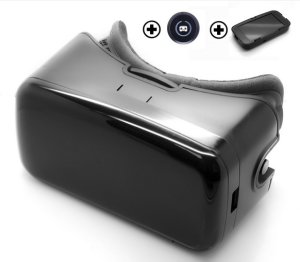 Based out of Hong Kong, a company called of I AM Cardboard has large plans to build an even bigger name for themselves in the Virtual Reality headset market. Last year they launched a Kickstarter for their XG Virtual Reality Headset. A few things make this headset stand out from its competitors. First, there are two different options to select from when purchasing this option, the traditional “cardboard” option that utilizes the display on your mobile phone. The second option is the Ultimate Package, complete with a PCVR display panel that can be inserted into the headset, giving you the option of using the headset with your computer. This is one of the first open to consumer products that is capable of running on the Oculus system. Lastly, the virtual reality headset comes with a bluetooth “clicker” that helps cover some of the issues that users usually have with cardboard-esque products. The clicker functions to allow the user to click on the screen to start and stop movies, enter and exit menus, and interact within virtual games. This device is the perfect middle ground between the Samsung Gear VR and Google Cardboard.
Based out of Hong Kong, a company called of I AM Cardboard has large plans to build an even bigger name for themselves in the Virtual Reality headset market. Last year they launched a Kickstarter for their XG Virtual Reality Headset. A few things make this headset stand out from its competitors. First, there are two different options to select from when purchasing this option, the traditional “cardboard” option that utilizes the display on your mobile phone. The second option is the Ultimate Package, complete with a PCVR display panel that can be inserted into the headset, giving you the option of using the headset with your computer. This is one of the first open to consumer products that is capable of running on the Oculus system. Lastly, the virtual reality headset comes with a bluetooth “clicker” that helps cover some of the issues that users usually have with cardboard-esque products. The clicker functions to allow the user to click on the screen to start and stop movies, enter and exit menus, and interact within virtual games. This device is the perfect middle ground between the Samsung Gear VR and Google Cardboard.
More Info
For more information on the XG Virtual Reality Headset Ultimate Package
For more information on I AM Cardboard
dscvr
I AM Cardboard didn’t just make the XG VR and call it quits, instead they started working on another initiative called the dscvr to add to their already impressive list of VR products. The Kickstarter may have just launched today, but I AM Cardboard has an outstanding track record so far when it comes to crowdfunding. Their last initiative was funded 420% over their original goal! While some may be skeptical about a product and company based out of Hong Kong and wonder how their customer service issues are handled. A quick glance at their previous Kickstarter page shows that tech support is on standby 24/7. The dscvr is quite different than their last VR initiative in that this device is specifically being marketed to mobile device users, and not all market fields like the XG VR was. Their sexy virtual reality headset it compact, smooth, and soft to the touch. A silicone “sling” holds your mobile device, preventing scratching and keeping a solid grip on your precious phone. In an effort to combat the chunkiness of competitor headsets, they have created a way to condense their headset, and allow it to spring into action when the time calls for it with a retractable spring loaded chassis. A conductive button built into the device allows users to directly click on things from inside programs without removing their device. Something I found unique is the hole inside the nose slot that allows you to center your phone easily. What else is awesome about this device? The way the dust proof silicone strap wraps around mobile phones and how it doesn’t block or obstruct the external camera of your mobile device. Meaning this device has the capabilities for you to do augmented reality, not just virtual.
More Info
For updates and to Kickstart dscvr

